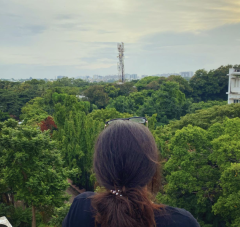The Indian media sector as a whole promise to be highly ‘Democratic,’ although this may not appear to citizens. The censor board in India is an excellent illustration of how the country fails to safeguard democracy. Around the world, the Indian censor board is notorious for making the most cuts in films. In India, this tendency is reinforced via all types of media. While India has some of the world’s biggest newspaper readership, it also has one of the highest rates of media bias and one of the lowest press freedom scores among democracies. This media bias has the potential to contribute to democratic backsliding, and media outlets must address it. Only then will India’s media be able to do its job correctly, which is to inform rather than sway the audience.
So, why does India, a country with a free press and an independent court, do so poorly on global media freedom indices? The media has ceased asking tough questions about the administration and its policies as a whole. They are afraid to criticise Prime Minister Narendra Modi and his senior ministers because they are awestruck by them. Unfortunately, many have become mouthpieces for government propaganda. Some are unafraid to promote religious polarisation and even hostility in the name of the ruling Bharatiya Janata Party’s electoral objective (BJP). The Unlawful Activities (Prevention) Act is causing alarm among many journalists.
Given the growing overlap between social media and traditional news outlets, this crackdown will only serve to further stifle press freedom. Furthermore, government efforts to restrain the media hurt journalists, infringing on individuals’ rights and physical safety in an undemocratic manner. Because of the Modi government’s onslaught on journalistic freedom. In reality, in 2020, the government jailed numerous journalists for criticising Prime Minister Narendra Modi’s reaction to the covid outbreak.
As a result of the crackdown on journalists, many authoritarian nations have created an insecure atmosphere for free reporting. As a result, we are left to wonder about the extent of true “democracy” practised by the Indian media, including the safety and well-being of innumerable journalists, publishers, and media outlets.
‘ScoopWhoop‘ Media is a New Delhi-based Indian digital media startup. It has a variety of online content verticals and is a news organisation that produces web series, documentaries, and current affairs reporting with a concentration on video production, primarily for teenagers and young adults. It also includes various forms of entertainment and information. ScoopWhoop began as a listicles-focused online site in August 2013, inspired by BuzzFeed. “These images from a Hindu lesbian wedding would make you go all aww,” was the title of the blog’s first post.

Within a day, the article had received over half a million views, providing the incentive for the blog to become a regular endeavour. Posts concerning the LGBTQ+ community are relatively new in India, as it appears to be ‘bold’ at a time when people are still learning about and accepting the movement. Politically speaking, it is hasn’t been accepted entirely although over the years the government has been taking steps to understand the community.

For decades, the concept of democracy has been important in India, and it has recently received a lot of attention from media outlets. These platforms in India, such as ScoopWhoop, create content that a vast audience wants to view, and they do it through polling, quizzing, and creating interactive Instagram/Facebook stories, among other things. These methods of collecting and producing content satisfy McChesney’s definition of democratisation since they give the people more power over decision-making.
The company then ventured into news media and investing to attain shares, and grew capital from there. Companies have decided to support and invest as a result of the current news that democratises material that is ethical and deserving of citizens actively consuming since it considers diverse voices and opinions. ScoopWhoop continues to defy preconceptions and boundaries by publishing news that would otherwise go unnoticed by mainstream media. It allows people from all walks of life a voice and serves as a guide. The majority of readers believe it makes them feel involved and educated about what is truly going on in the country from a social rather than a political standpoint.
